Greatest Hits of American Victorian Music
"A Duet." Lithograph from the 1850's
Have you ever wondered what music sounded like in 19th century America? In my quest to experience American Victorian life in its truest form, I've collected original and bound reproductions of 19th century popular sheet music over the years. I also collect early recordings and modern performances, played and sung as close to the original intent as I can get.

I've searched the internet for what I believe to be the best links through which to experience these great American popular tunes. Some are links to YouTube videos, so please do not judge these by the video quality as much as for the audio content and the spirit in which the performances are played.
Others are links to various internet music formats (mp3, midi, and other audio formats). Some will play immediately, but some you will have to find and hit the "play" buttons. I have included several links to very old recordings when possible (some well over 100 years old). In this way, I feel the performances are much closer to the original intent of the music.
Finally, if you like the idea of hearing more great old-time music, visit my links at the end of the post for my sources!
Let's begin our journey about 1800. What were Americans listening to and humming in their heads, and what was their access to music? America was still a young country. A lot of songs they loved were patriotic or sacred in nature. They were passed on in the oral tradition and learned through attending church services or at public performances by local or traveling musicians. A lot of the tunes were very old and came from England, but were given new lyrics to match American sentimentalities. Of course, classical music was going strong, and most people were familiar with at least a few classical bits and pieces, just as most people are today. There was always someone in the immediate family who could play piano, organ or fiddle, so that everyone could sing and dance to the songs they loved most.
Here are some of the "Top of the Pops" from the very early years of America:
Early One Morning (English traditional)
Barbara Allen (1600's)
Fair Margaret And Sweet William (pre-1611)
The Girl I Left Behind Me (as early as 1650)
Greensleeves (1584 words, tune 1652. Became What Child Is This after the Civil War, William C. Dix)
Johnny's Gone For A Soldier (later 1600's, Irish)
Drink To Me Only With Thine Eyes (1770, words by Ben Johnson, tune unknown origin)
Yankee Doodle ( c. 1750's)
The Cruel War (popular during the American Revolution)
Amazing Grace (1779, John Newton)
To Anacreon In Heaven (c. 1780, Francis Scott Key wrote the Star Spangled Banner to the same tune during the War of 1812)
Star Spangled Banner (1814, Francis Scott Key & John S. Smith. Also known as "To Anacreon in Heaven")
Rock Of Ages (1832, Hastings. English)
America (1832, from an English traditional melody, also became "God Save The King")
The Parting Hand (1835, John Blain & William Walker) Sacred Harp, or Shape Note music.
Woodman Spare That Tree (1837, George P. Morris and Henry Russell)
Rocked In The Cradle Of The Deep (1839, Emma H. Willard & Joseph P. Knight)
Simple Gifts (1848, Joseph Brackett, Jr.)
Arkansas Traveler (c. 1850, Sanford Faulkner)

Around 1830, a new musical format began that makes modern day Victorians shudder with disgust. Minstrel shows were performances staged by white men in black face. The lyrics were written in a mocking African-American stereotyped dialect, and African-Americans were portrayed as simple-minded, comical beings. Traveling minstrel troupes were extremely popular, and the tunes carry on to this day, more often than not with the original words changed so as to not offend the modern ear:
Jump, Jim Crow (1828, Thomas D. Rice. This was the beginning of the minstrel show era)
Zip Coon (1834, better known today as Turkey In The Straw)
Jim Crack Corn (c. 1846, Daniel Emmett. Also known as "Blue-Tail Fly)
Ben Bolt (1848, Thomas D. English and Nelson Kneass)
Buffalo Gals (1844, John Hodges. Written for the minstrel stage)
Wait For The Wagon (1851, R. Bishop Buckley & George P. Knauff)
The Yellow Rose Of Texas (c. 1858, unknown author)
If you can't beat 'em, join 'em. Many African-Americans began composing and publishing their own popular minstrel music. Here are some memorable favorites from James A. Bland:
Carry Me Back to Old Virginny (1879, James A. Bland)
O Dem Golden Slippers (1879, James A. Bland)
Stephen Foster
Stephen Foster is probably the most recognizable American Victorian songwriter. His songs endure, even though a good portion of them were written for the minstrel stage. He tended to be sympathetic to the slave population, and he tried to portray African-Americans with true human emotions (even though he kept the stereotyped dialect). Minstrel songs were now known as "Ethiopian Melodies." Foster wrote pieces for The Christy Minstrels to perform:
Old Folks At Home (1851, Stephen Foster)
Hard Times (1854, Stephen Foster)
Beautiful Dreamer (1864, Stephen Foster)
Virginia Belle (1860, Stephen Foster)
Old Black Joe (Stephen Foster)
My Old Kentucky Home (1853, Stephen Foster. Click on the wav or mp3 icons)
Oh! Susanna (1848, Stephen Foster)
Jeanie with the Light Brown Hair (1854, Stephen Foster)
Camptown Races (1850, Stephen Foster. A 1911 recording)
Some songs of the day were written from anti-slavery perspectives:
Year of Jubilo (1863, Henry Clay Work)
Swing Low, Sweet Chariot (c. 1862, Wallace Willis. Negro spiritual)
Then, the Civil War began. Both the North and South had their own songs, but some tunes were given different lyrics by each side. Some are patriotic, but some are of the loneliness the soldiers and their distant families were feeling:
Lorena (1856, Henry D. L. Webster)
Dixie's Land (1859, Daniel D. Emmett)
Tenting On The Old Campground (1863, Walter Kittredge)
The Battle Hymn Of The Republic (1861, Julia Ward Howe, 1908 recording. See also John Brown's Body)
Aura Lee (1861, W. W. Fosdick & George R. Poulton)
Marching Through Georgia (1865, Henry Clay Work)
Just Before The Battle, Mother (1864, George F. Root)
Battle Cry Of Freedom (1862, George F. Root)
Tramp Tramp Tramp (1864, George F. Root)
Bonny Blue Flag (1861, Harry McCarthy, from an old Irish tune)
The Vacant Chair (1862, George F. Root)
Goober Peas (pre-1866, A. Pindar)
John Philip Sousa
John Philip Sousa, "The March King," popularized the military march with his famous band and original patriotic scores in the late 1800's and early 1900's. No words, just rousing music:
In the later 1800's, musical theater and light opera became popular in the U.S. and the hit songs were learned by everyone. In England, Gilbert & Sullivan's comic operas were very popular, and became so here in the States as well. The songs had a comic, lighthearted sense of humor, often with a twist, and the productions are still being performed today:
HMS Pinafore excerpt. My favorite!
Some songs reflected the westward progression in America. Songs about mining, the railroads, river travel and the West were very popular:
Clementine (1863, Percy Montrose and H. S. Thompson)
Home On The Range (1873, Dr. Brewster Higley and Daniel E. Kelley)
Oh Shenandoah (c. 1820's)
Then there were the parlor songs. These were sentimental favorites that really began the modern idea of "hit singles." Sheet music was widely available, and anyone could pick up a copy and learn to play and sing these songs:
Silver Threads Among The Gold (1873, Eben E. Rexford & Hart P. Danks)
I'll Take You Home Again, Kathleen (1875, Thomas Westendorf)
Grandfather's Clock (1876, Henry Clay Work)
While Strolling Through The Park One Day (1884, Ed Haley)
After The Ball (1892, Charles K. Harris. Click here to hear Mr. Harris sing his own song!)
A Bird In A Gilded Cage (1900, Arthur J. Lamb & Harry Von Tilzer)
In the Good Old Summertime (1902, George Evans & Vincent P. Bryan)
Under the Bamboo Tree (1902, J. Rosamond Johnson & Bob Cole)
Wait Til The Sun Shines, Nellie (1905, Albert Von Tilzer & Andrew B. Sterling)
The Bird On Nellie's Hat (1906, Arthur J. Lamb & Alfred Solman)
Shine On Harvest Moon (1908, Nora Bayes & Jack Norworth)
I Want A Girl Just Like The Girl That Married Dear Old Dad (1911, Harry Von Tilzer & Will Dillon)
Thomas A. Edison with his first phonograph
In late 1880's, a new device took the country by storm. The phonograph cylinder was the first sound recording device, and soon afterward, the cylinder phonographs and gramophones were very popular in America. Mechanically reproduced music was a great new way for Americans to hear the music they loved. No longer was there a need to go to a concert, or to even play or sing your own songs. You could just put on a record and enjoy the best the world had to offer!
I hope you've enjoyed my journey through Victorian American music. I used a lot of references in researching this post! Here are some of the best:
• For Old Time Victrola Music, click here.
• For lyrics and midi format to songs from 1800-1860, click here.
• For some original 1890's recordings, click here.
• Browse the collection of original recordings at the Cylinder Preservation and Digitation Project. This is a wonderful site!
• Tinfoil is a great site to hear very old music in RealAudio format. CD's for sale also.
• The Belfers Digital Cylinder Collection has more original recordings.
• For the ultimate collection of Stephen Foster tunes, click here. You can click on each title to hear the melody, or click on Text to read the words. This entire site is packed with information.
• Read a great article about Stephen Foster.
• Great story about the prolific African-American songwriter, James A. Bland.
• For more about the structure and popularity of the minstrel show, click here.
• For more on African-American music history, click here.
• For an overview of early 19th-century American music styles, click here.
• For an overview of late 19th-century American music styles, click here.
• For more about Shape Note and Sacred Harp singing, click here.
• For some midi versions of popular songs in American history, click here.
• For more old-time music midi's, click here.
• For digitized copies of historical sheet music, click here.
• Parlor Songs has some great sheet music, history and songs you can listen to.
• For more about Tin Pan Alley, Showtunes, Ragtime and Sousa, click here.
• For a great explanation of the evolution of parlour music, click here.
• For a detailed description of the Victorian ball, click here.
• For a history of the guitar in Victorian times, click here.
Here is a list of my personal favorite modern recordings of American Victorian music:
Hard Times, It Ain't Right, and Stolen Love (The Red Clay Ramblers). The Ramblers are my favorite group who perform some terrific renditions of American old-time music. Not all the songs on these collections are old, but they all have an old-time feel.
After The Ball Joan Morris sings to the piano accompaniment of William Bolcom. This is a great CD, and very true to the original numbers! I highly recommend this one!
The Gay 90's This is a wonderful CD containing original music box and piano roll music from the era of the 1890's.
The Civil War Original Soundtrack Recording. From the great Ken Burns film. Mostly instrumentals, but very true to form.
The Greatest Ragtime of the Century Biograph. Original piano roll solos from the great ragtime pianists.
The Shapenote Album A nice collection of shapenote or sacred harp music.
Some individual songs that can be downloaded from iTunes that are worthy of a 19th century collection are:
Hard Times Come Again No More — The Red Clay Ramblers
Long Time Traveling — Red Clay Ramblers
Ol' Zip Coon — Camptown Shakers or 2nd South Carolina String Band
Ol' Dan Tucker — Camptown Shakers or 2nd South Carolina String Band
The Boatman's Dance — Camptown Shakers
The Arkansas Traveler — 2nd South Carolina String Band
The Yellow Rose of Texas — Bobby Horton
Lorena — Bobby Horton
The Bonnie Blue Flag — Bobby Horton
Tramp Tramp Tramp — Jerry Silverman and The Harvesters
Battle Cry of Freedom — Jerry Silverman with The Harvesters
Just Before the Battle, Mother — Jerry Silverman and The Harvesters
After the Ball — Joan Morris. Download the whole "After The Ball" CD. You won't be sorry!
Buffalo Gals — Allen J. M. Smith
Old Black Joe — Allen J. M. Smith
Silver Threads Among The Gold — John McCormack
Kingdom Coming — Susquehana Travellers
Wait For the Wagon — Susquehana Travellers
My Old Kentucky Home —Susquehana Travellers
Labels: Entertainment, History
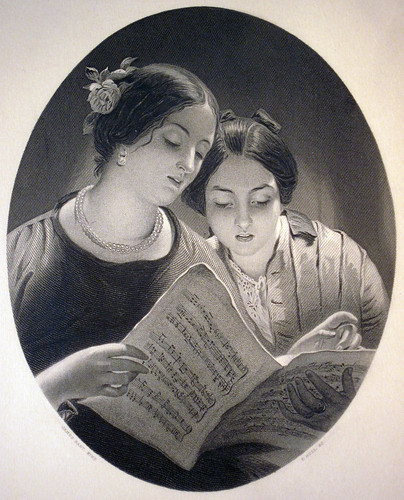
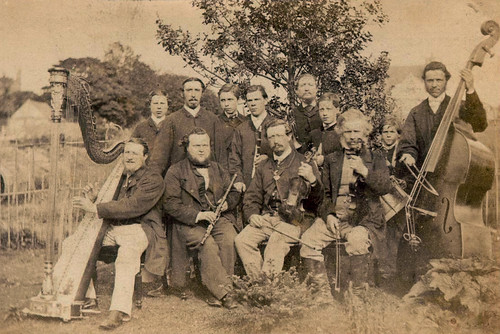
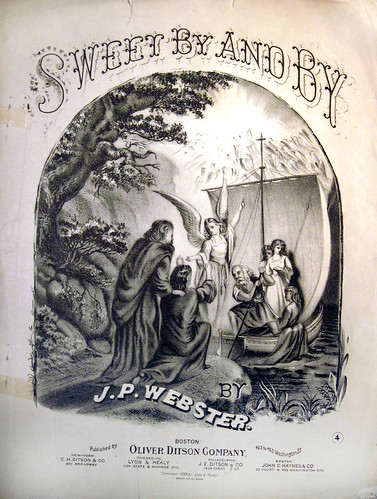
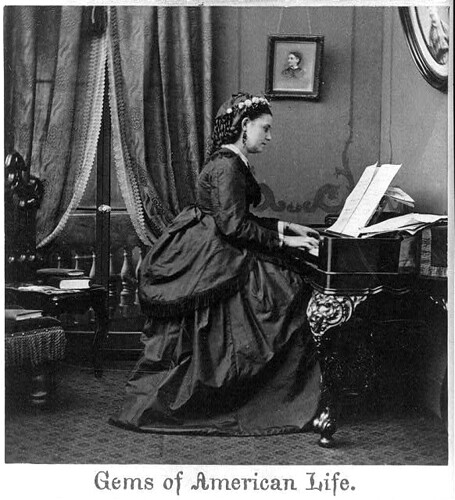
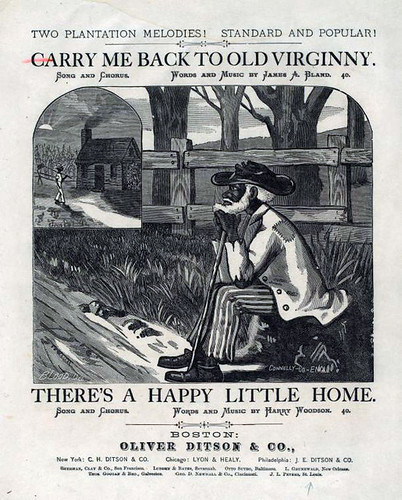
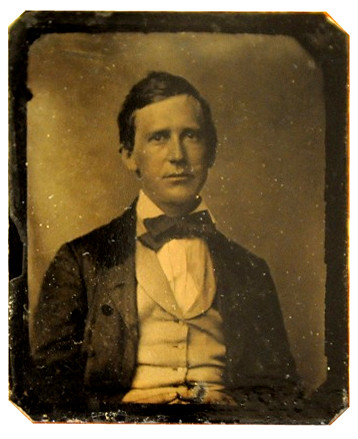
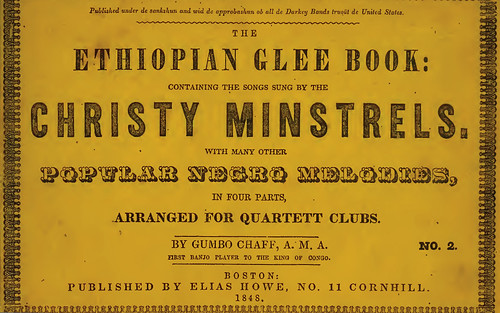

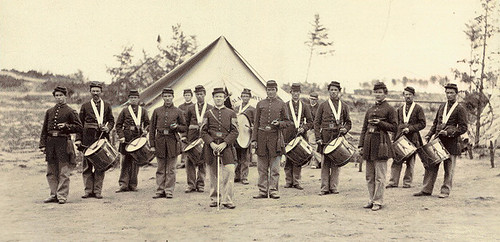
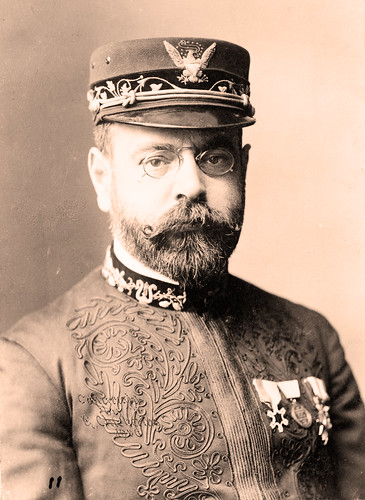
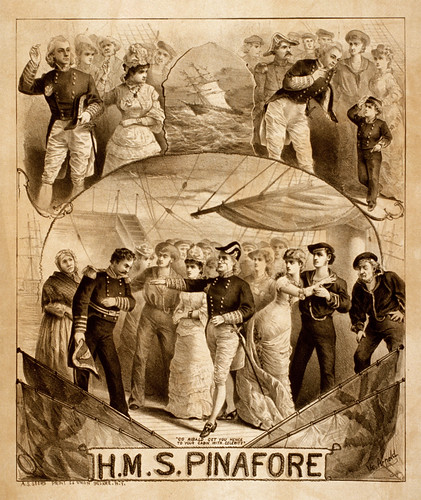
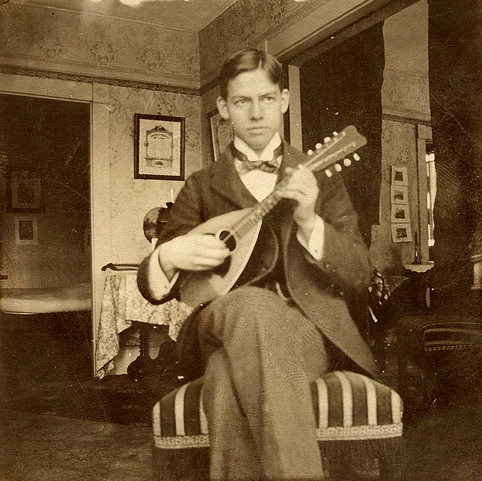
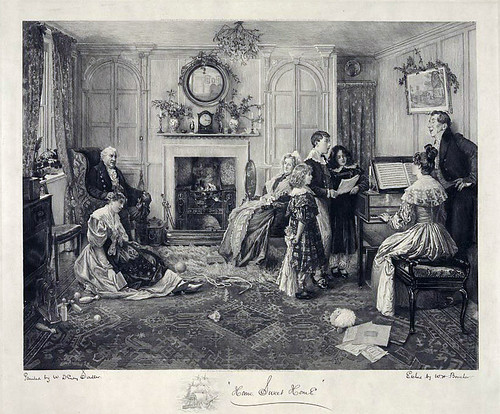
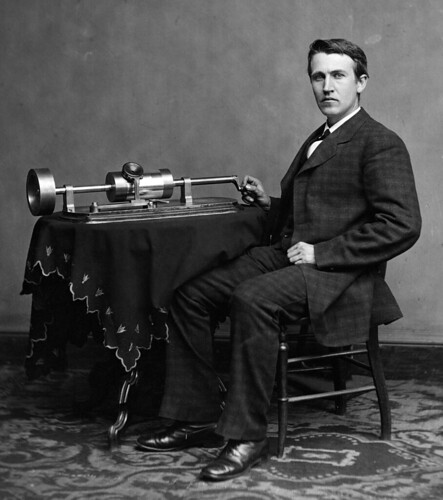
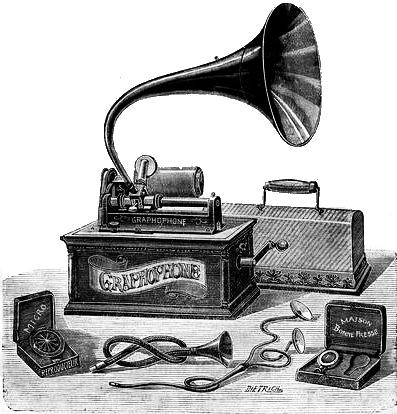
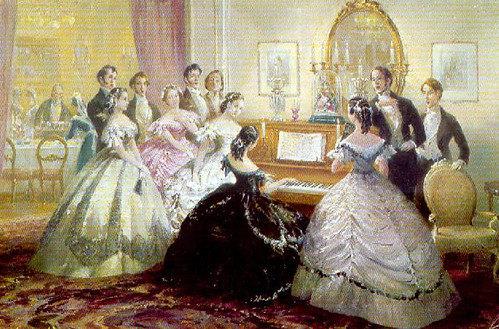
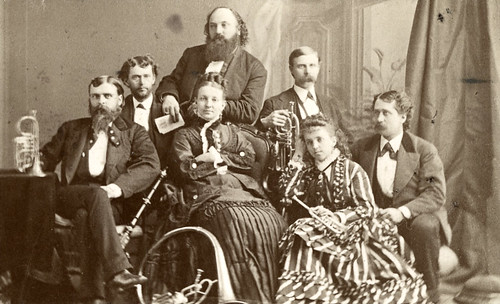
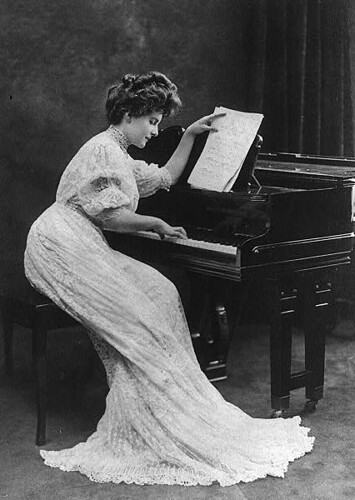


17 Comments:
Dear Pam..
Wow!! What an absolutely fabulous compilation of music history. I do enjoy the sounds of yesteryear and there is nothing like being swept back in time to such tunes as these.
Fabulous post my dear! Thank you for sharing.
Hugs,
Sandra
Miss Sandra-
You're very welcome! I somehow knew that you would enjoy such a post. :-)
-Pam
WONDEDRFUL POST...so much is shared here it it imposible to take it in all at one time.
Thank you for all your hard work in in assembling this for us.
Very Sincerely,
Rose
Hi Rose-
Thank you! I was wondering if I should have broken this out into a few posts, but then the flow I was working on would be chopped up. I know it's a LOT of links, but I figure if anyone was interested, they could always come back and listen in bits and pieces!
-Pam
OMG, this is an incredible post! I would love to see (and hear) this on the History Channel - it is so fascinating. My favorite time period is Colonial America so I really enjoyed those songs especially, although I must agree, the HMS Pinafore was definitely fun:)
Pam,
You always serve up the very best in your posts. Lucky for all of us who know you and follow your blogsite.
Pam, have you entered your fine blog in any contests? I tell you, yours is one of the very finest I've seen.
Yes, I agree with others, I'd like to see this one as a program on PBS. Clever, well-written and I love, love the photos. Thanks for treating us to such an amazing post!
Your biggest fan,
Mrs. D.
Pam,
What a wonderful post! Thanks for sharing all of this information:).
Happy Mother's Day!
Blessings,
Kim
Sweetbrier Cottage-
I would like to see something about old time music on the History Channel, too! (It would be a lot easier than clicking on all these links!). This kind of thing always fascinated me, and I never knew anyone else who liked the really old music, but I had a feeling some of my blog friends would enjoy it! :-)
-Pam
Mrs. D.-
Thank you for all the nice compliments *blushing*! I'm glad you enjoyed this one!
I haven't entered any contests. I guess I'm not really into that. I've always just researched what I loved. When I do a lot of researching on the internet, sometimes I bookmark so many things, that it's as much for my own benefit as for y'all to get everything into a cohesive unit and create a post. :-)
-Pam
Kim-
Thank you!
Happy Mother's Day, that's right! I never got around to doing a Mother's Day post. But I was out celebrating all weekend with my mother, so I have an excuse! ;-)
-Pam
What a marvelous post! I'd love to own a Victrola, but until I do I can just return to your post and browse through the comprehensive list. My first piano teacher was an elderly lady partial to Stephen Foster so I learned many of his songs then. (My two finger renditions don't compare with the authentic versions, though!) The Red Clay Ramblers are a local group and we have seen them many times in concert - it's so interesting that you've included them in the 'modern' list.
Thanks for sharing these lovely songs.
Cheers,
Leah
Hi Leah,
I'm glad you liked the post!
I discovered the Red Clay Ramblers in the early 1980's and have been a fan ever since. We've seen them whenever they come to Chicago (they don't travel this way much anymore).
-Pam
I am amazed you put so much effort into this fabulous post. Thank you
so very much. This is wonderful. You did a great post.
Big hug for this yvonne
I am coming back and read it again
Hi Yvonne-
Thank you for the nice comments! I'm glad you liked it. :-)
-Pam
Dear Pam,
You are impressive! A treasure of information. I could see you with your blog, being the subject in one of those wonderful PBS documentary. Great job!
Anyes
XX
Thank you for including two of my songs on iTunes in your list of recommendations. Feel free to use any of my songs on this lovely site.
More Victorian songs are downloadable free of charge at www.myspace.com/allenjmsmith.
Keep up the good work, and if I can be helpful in any way, please let me know. I'll put a link to your site on my MySpace profile.
Hi Allen-
It's an honor to hear from you! Your music is very true to form, just as I imagine old-time music would have been played back in the era the tunes were written. I'm glad you don't mind that I included some of your tunes in this post.
If anyone out there wants to hear some really good old-time and Victorian songs, Allen J. M. Smith has some great CDs on CD Baby, iTunes and on his MySpace page. They would also make nice gifts for any lovers of Victoriana or the good old days!
-Pam
Post a Comment
Subscribe to Post Comments [Atom]
<< Home